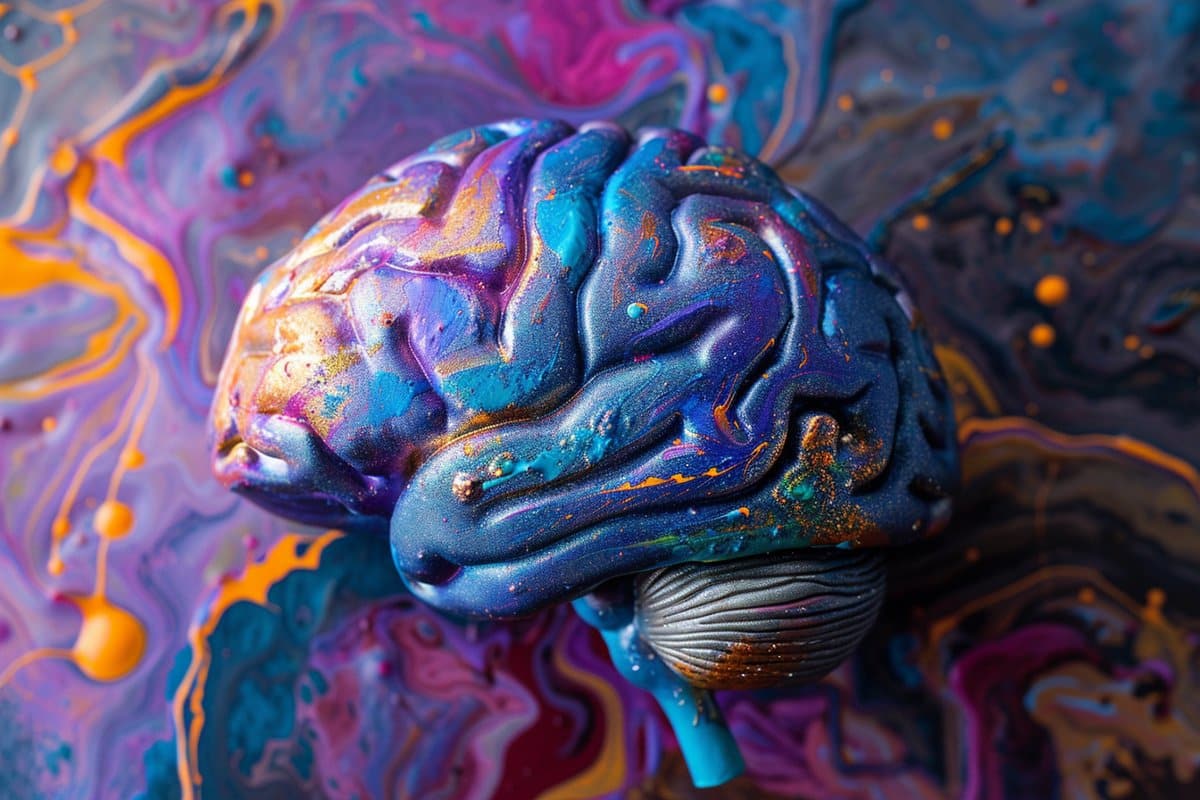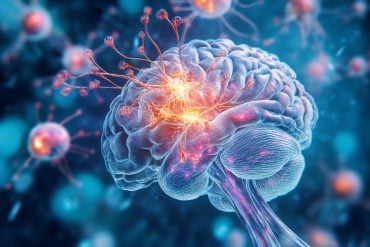Summary: A new study reveals that psilocybin-containing mushroom extract exhibits a more potent and enduring effect on synaptic plasticity compared to its synthetic counterpart. This research highlights the potential of natural psychedelic compounds to revolutionize the treatment of psychiatric disorders. With alarming statistics indicating a significant portion of patients unresponsive to existing medications, this study opens new avenues for innovative, nature-based psychiatric treatments.
Key Facts:
- Enhanced Neuroplasticity: The mushroom extract demonstrated a stronger and more prolonged impact on synaptic plasticity, potentially offering unique therapeutic benefits.
- Metabolic Profile Differences: Metabolomic analyses indicated distinct metabolic profiles between the mushroom extract and synthetic psilocybin, hinting at the former’s unique influence on oxidative stress and energy production pathways.
- Controlled Cultivation Feasibility: Despite the challenge of producing consistent natural extracts, controlled mushroom cultivation offers a promising approach to replicate extracts for medicinal use.
Source: Hebrew University of Jerusalem
A new study led by Orr Shahar, a PhD student, and Dr. Alexander Botvinnik, under the guidance of researchers Dr. Tzuri Lifschytz and psychiatrist Prof. Bernard Lerer from the Hebrew University-Hadassah Medical Center, suggests that mushroom extract containing psilocybin may exhibit superior efficacy when compared to chemically synthesized psilocybin.
The research, focusing on synaptic plasticity in mice, unveils promising insights into the potential therapeutic benefits of natural psychedelic compounds in addressing psychiatric disorders.
The study indicates that psilocybin-containing mushroom extract could have a more potent and prolonged impact on synaptic plasticity in comparison to chemically synthesized psilocybin.
Millions of individuals globally, constituting a significant portion of the population, grapple with psychiatric conditions that remain unresponsive to existing pharmaceutical interventions.
Alarming statistics reveal that 40% of individuals experiencing depression find no relief from currently available drugs, a trend similarly observed among those with OCD.
Moreover, with approximately 0.5% of the population contending with schizophrenia at any given time, there exists a pressing demand for innovative solutions tailored to those who derive no benefit from current medications.
In response to this urgent need, psychedelic drugs are emerging as promising candidates capable of offering transformative solutions.
The study’s preliminary findings shed light on the potential divergence in effects between psilocybin-containing mushroom extract and chemically synthesized psilocybin. Specifically, the research focused on the head twitch response, synaptic proteins related to neuroplasticity, and metabolomic profiles in the frontal cortex of mice.
The results indicate that psilocybin-containing mushroom extract may exert a more potent and prolonged effect on synaptic plasticity when compared to chemically synthesized psilocybin.
Significantly, the extract increased the levels of synaptic proteins associated with neuroplasticity in key brain regions, including the frontal cortex, hippocampus, amygdala, and striatum. This suggests that psilocybin-containing mushroom extract may offer unique therapeutic effects not achievable with psilocybin alone.
Metabolomic analyses also revealed noteworthy differences between psilocybin-containing mushroom extract and chemically synthesized psilocybin. The extract exhibited a distinct metabolic profile associated with oxidative stress and energy production pathways.
These findings open up new possibilities for the therapeutic use of natural psychedelic compounds, providing hope for those who have found little relief in conventional psychiatric treatments.
As the demand for innovative solutions continues to grow, the exploration of psychedelic drugs represents a crucial avenue for the development of transformative and personalized medicines.
Additionally – in Western medicine, there has historically been a preference for isolating active compounds rather than utilizing extracts, primarily for the sake of gaining better control over dosages and anticipating known effects during treatment. The challenge with working with extracts lay in the inability, in the past, to consistently produce the exact product with a consistent compound profile.
Contrastingly, ancient medicinal practices, particularly those attributing therapeutic benefits to psychedelic medicine, embraced the use of extracts or entire products, such as consuming the entire mushroom. Although Western medicine has long recognized the “entourage” effect associated with whole extracts, the significance of this approach gained recent prominence.
A major challenge with natural extracts lies in achieving a consistently stable compound profile, especially with plants; however, mushrooms present a unique case. Mushroom compounds are highly influenced by their growing environment, encompassing factors such as substrate composition, CO2/O2 ratio, light exposure, temperature, and microbial surroundings. Despite these influences, controlled cultivation allows for the taming of mushrooms, enabling the production of a replicable extract.
This research not only underscores the superiority of extracts with diverse compounds but also highlights the feasibility of incorporating them into Western medicine due to the controlled nature of mushroom cultivation.
About this psychopharmacology research news
Author: Danae Marx
Source: Hebrew University of Jerusalem
Contact: Danae Marx – Hebrew University of Jerusalem
Image: The image is credited to Neuroscience News
Original Research: Open access.
“Effect of chemically synthesized psilocybin and psychedelic mushroom extract on molecular and metabolic profiles in mouse brain” by Orr Shahar et al. Molecular Psychiatry
Abstract
Effect of chemically synthesized psilocybin and psychedelic mushroom extract on molecular and metabolic profiles in mouse brain
Psilocybin, a naturally occurring, tryptamine alkaloid prodrug, is currently being investigated for the treatment of a range of psychiatric disorders. Preclinical reports suggest that the biological effects of psilocybin-containing mushroom extract or “full spectrum” (psychedelic) mushroom extract (PME), may differ from those of chemically synthesized psilocybin (PSIL).
We compared the effects of PME to those of PSIL on the head twitch response (HTR), neuroplasticity-related synaptic proteins and frontal cortex metabolomic profiles in male C57Bl/6j mice. HTR measurement showed similar effects of PSIL and PME over 20 min. Brain specimens (frontal cortex, hippocampus, amygdala, striatum) were assayed for the synaptic proteins, GAP43, PSD95, synaptophysin and SV2A, using western blots.
These proteins may serve as indicators of synaptic plasticity. Three days after treatment, there was minimal increase in synaptic proteins. After 11 days, PSIL and PME significantly increased GAP43 in the frontal cortex (p = 0.019; p = 0.039 respectively) and hippocampus (p = 0.015; p = 0.027) and synaptophysin in the hippocampus (p = 0.041; p = 0.05) and amygdala (p = 0.035; p = 0.004).
PSIL increased SV2A in the amygdala (p = 0.036) and PME did so in the hippocampus (p = 0.014). In the striatum, synaptophysin was increased by PME only (p = 0.023). There were no significant effects of PSIL or PME on PSD95 in any brain area when these were analyzed separately.
Nested analysis of variance (ANOVA) showed a significant increase in each of the 4 proteins over all brain areas for PME versus vehicle control, while significant PSIL effects were observed only in the hippocampus and amygdala and were limited to PSD95 and SV2A. Metabolomic analyses of the pre-frontal cortex were performed by untargeted polar metabolomics utilizing capillary electrophoresis – Fourier transform mass spectrometry (CE-FTMS) and showed a differential metabolic separation between PME and vehicle groups.
The purines guanosine, hypoxanthine and inosine, associated with oxidative stress and energy production pathways, showed a progressive decline from VEH to PSIL to PME. In conclusion, our synaptic protein findings suggest that PME has a more potent and prolonged effect on synaptic plasticity than PSIL. Our metabolomics data support a gradient of effects from inert vehicle via chemical psilocybin to PME further supporting differential effects.
Further studies are needed to confirm and extend these findings and to identify the molecules that may be responsible for the enhanced effects of PME as compared to psilocybin alone.







